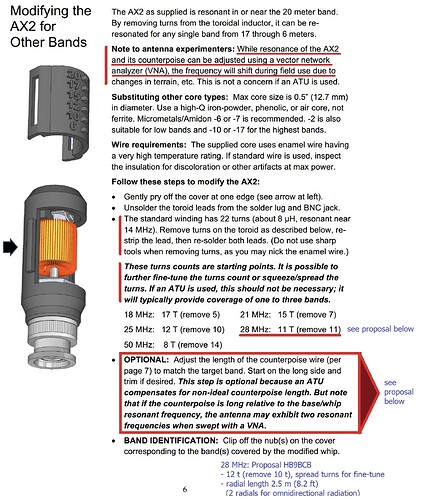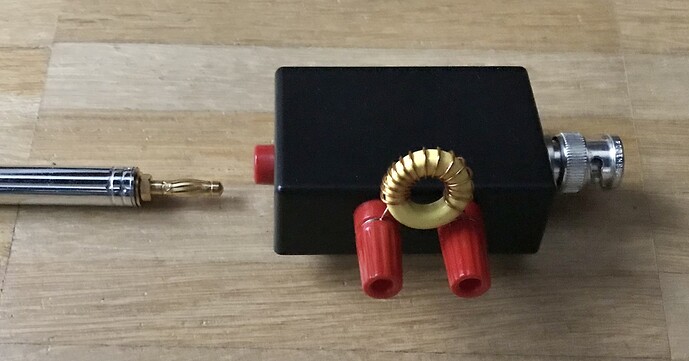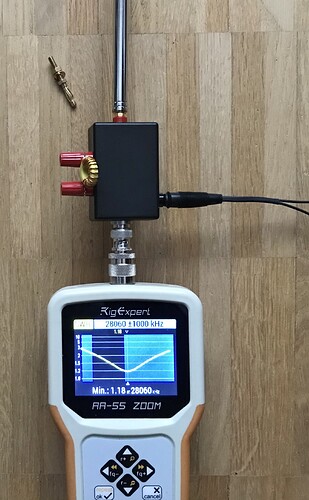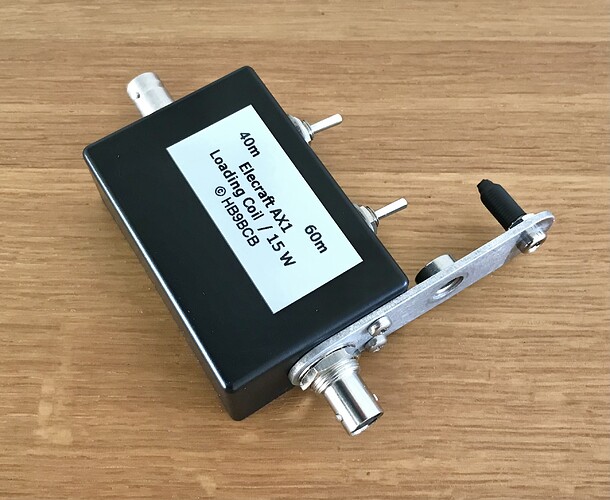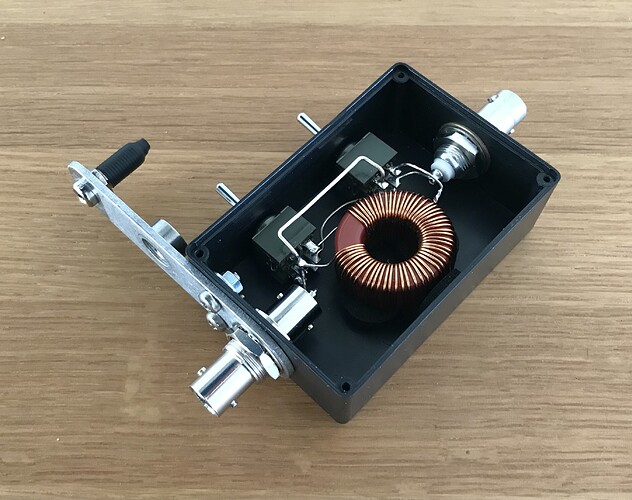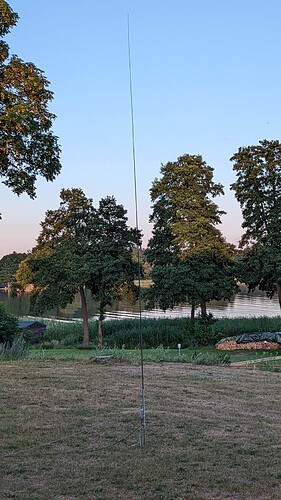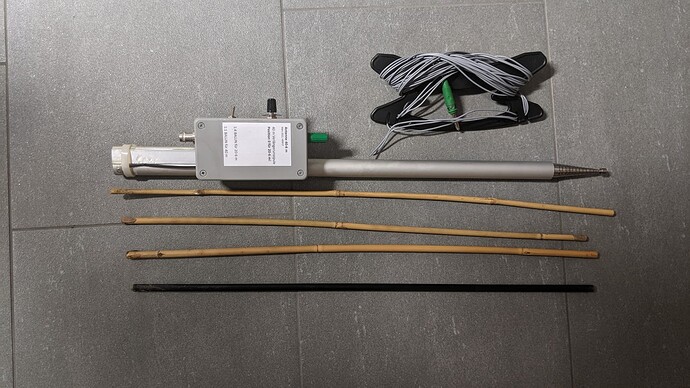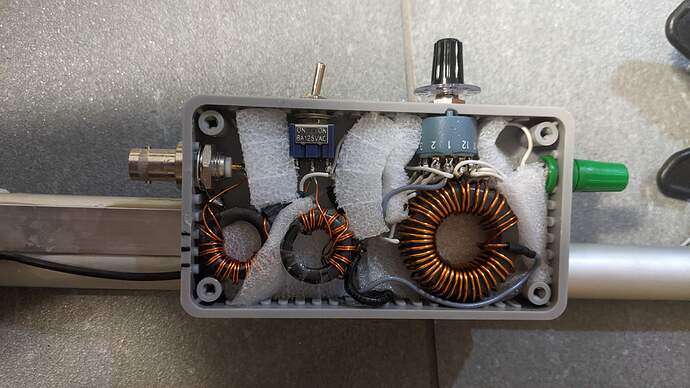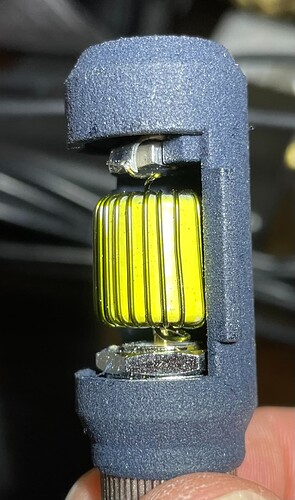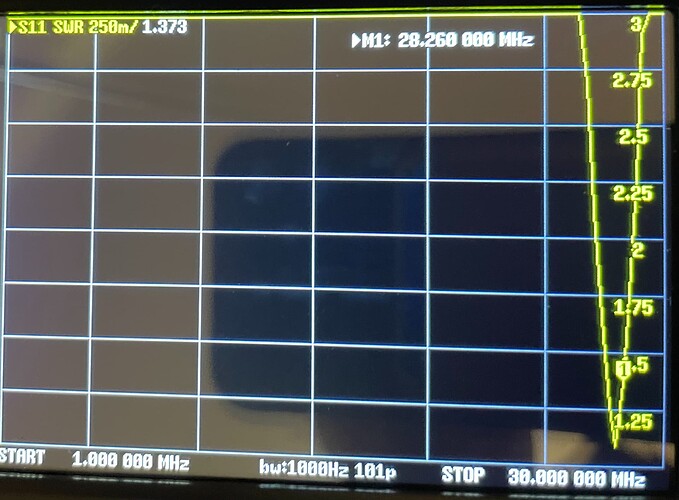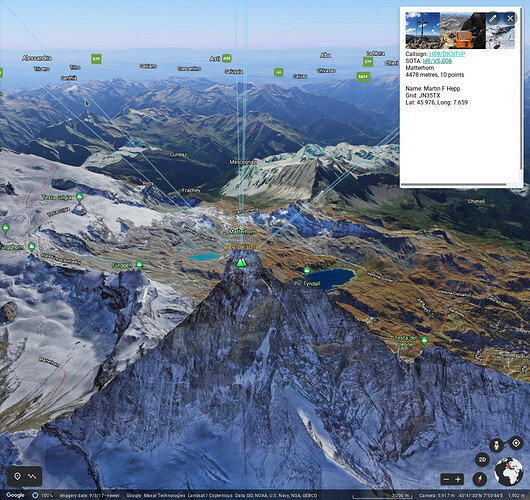Hello. I just snagged an AX2 antenna during the Elecraft.com February sale. My plan is convert it to a dedicated 10m antenna. Elecraft provided very basic instructions for this (desolder, remove 11 of the 22 windings, resolder) but I’d love to find more a full walkthrough. I haven’t desoldered before and I’m nervous about turning my antenna into an expensive aluminum stick. Have any of you seen a Youtube tutorial or similar instructions on this mod? Thanks and 73, Steve-W7ETF
Hi Steve.
Personally I would not mess around with modifying the AX2 and possibly destroy it’s other capabilities. Would it not be cheaper to look for suitable CB antenna to modify?
73 Allan GW4VPX
From my point of view, the instructions in the AX2 Owners Manual (for Antenna Experimenters) are very detailed, I really couldn’t say more about them.
If that is not enough for you, you should perhaps critically question your expectations again.
73 gl, Heinz
Copy from Elecraft AX2 Owners Manual, page 6:
I made this very change to my AX2 to turn it into a 12m antenna. It’s as simple as described in the manual. As for desoldering, all they’re saying is melt the solder so you can disconnect the coil.
Don’t overthink it. ![]()
Chris
Thanks, Heinz. I’m definitely overthinking it. Just need to dive in and give it a shot.
Good to hear that you were successful, Chris! My main concern is the connection on the BNC side. There’s not much gap to get the soldering iron in. I’m wondering if I could desolder the top and then wiggle the torroid out to get to the bottom lead. And why would I even need to disconnect both ends, anyway? Would love to hear how you managed that bit. 73, Steve-W7ETF
Because the Elecraft whip has an M4 thread and there is a suitable antenna base in my experimental material, I was able to take a look at the whip with a loading coil in the shack … the values given below are therefore only very rough guide values, which show the order of magnitude to be expected:
Toroidal core T-68-6, wound with ECW 0.64 mm (#22)
-
21 MHz: 25 t (~3.5 uH)
-
24.9 MHz: 20 t (~2.26 uH)
-
28 MHz: 15 t (~1.4 uH)
To repeat Elecraft’s statements, the length and arrangement of the radial(s) used and the respective ground conditions have a large influence on the resonant frequency (order of +/- 1 MHz or significantly more …), which is why the use of an antenna tuner is recommended.
To be honest, I don’t recall exactly. It was a spur of the moment thing. I took a look at my antenna and I might have left the BNC side connected, but there is enough room for me to get the thinnest tip of my soldering iron (Pinecil) in there. The top connection is pretty straightforward and I solder it with everything in place.
Chris
Many antenna experts with an excellent theoretical background may not think much of these very short whip antennas from Elecraft. All the more astonishing are the dx QSOs realized again and again by the many AX1 and AX2 enthusiasts.
One such AX1 enthusiast is Daniel HB9IIO, he even uses this antenna to hunt SOTA s2s from time to time. So that he doesn’t always have to screw the AXE1 extender on and off again for 40m, I recently built him a switchable 60/40m extender.
Daniel used this modified 60-10m AX1 (with 3 radials of 3.1 m each) with the KX2/KXAT2 quite successfully on his last 3 SOTA activations.
Some photos of this antenna can be seen on his qrz page and on sotl.as.
BTW, the AXW1 telescopic whip is used on both the AX1 and AX2.
Nice. That’s a handy testing setup.
My telescopic antenna is 5.6 m long and usable from 40-6 m with an antenna tuner. Such telescopes are available cheap at AliExpress.
73, Peter - HB9PJT
Taking this interesting thread slightly sideways, I have a question…
Conventional wisdom (eg my 1971 RSGB Radiocommunications Handbook since when things have no doubt developed) suggests that the loading coil in electrically short loaded whips (eg mobile antennas) can contribute significantly to the radiation.
I think that torroidal inductors have a closed field, and tend not to radiate.
On the other hand, they can have a higher Q than a solenoid coil, which suggests lower loss in the inductor and more energy to radiate from the whip section…is that why they work well in the AX2 design…?
Adrian
G4AZS
I assume that every coil radiates, even those on the toroidal core. The whole antenna can consist of one coil (helical antenna) or the coil is very short (toroidal core) which radiates much less.
73, Peter - HB9PJT
Closing the loop on this one: I completed the AX2 mod today and I’m happy to report that it was very straightforward, if a little delicate. The results are exactly what I had hoped. Very low SWR in the 10m CW range and my KX3 brings it down to 1:1 across the band.
I know there are cheaper routes to a portable 10m vertical, but there’s a lot of anecdotal evidence to suggest that this one punches above its weight.
Incidentally, I did try to use the KX3 ATU on the unaltered antenna to see if I could make it usable on 10m, per a recommendation from Etienne-K7ATN, but could only bring it down to 3.6:1.
Thanks for the encouragement. I’m always impressed by the helpfulness of the SOTA community.
73, Steve-W7ETF
“Conventional wisdom suggests that the loading coil in electrically short loaded whips can contribute significantly to the radiation”.
“I think that torroidal inductors have a closed field, and tend not to radiate”…
Partially answering my own question from higher up the thread, apparently it depends on the permeability of the core material:
https://owenduffy.net/balun/concept/FluxLeakage.htm
I am also pretty happy with various short vertical designs for SOTA.
When it comes to performance, I think it is important to realize that the pattern of radiation in relation to potential chasers is likely more relevant than absolute radiation efficiency, and there will be a lot of randomness involved.
At least when activating a rare summit like e.g. the Matterhorn, all you need are a few random good paths to a few chasers, including all kinds of reflections on etc. So what a short vertical looses in terms overall performance may not really affect the number of QSOs in the log or the success of the activation. They will just be distributed less evenly in terms of their QTH.
The expected number of QSOs per activation is IMO a function depending on
- duration of the activation,
- number of chasers QRV or motivateable to be QRV (e.g. weekends vs. during the week),
- mode / set of modes,
- attractiveness of the summit (points, rareness,…),
- radiated power,
- match between radiation pattern and spatial distribution of chasers,
- propagation and condx in general,
- QRM/contests competing with our signals,
- effort and chances for chasers (time vs. likelihood of a successful QSO, alerts and spots and quality thereof - e.g. precision and reliability of forecasted information; competence of the operator managing the pile-up, …),
and finally - the radiation efficiency of the antenna.
73 de Martin, DK3IT
Owen Duffy describes the shielding of magnetic flux. In the case of the antenna, the electromagnetic radiation is of interest, which is not the same.
73, Peter - HB9PJT
Hi Martin,
Yes!
I didn’t mean to hijack this thread (*), but it links with my thinking about SOTA antennas for 160m, where any practical design will be a compromise - too low, too short, poor counterpoise, high angle of radiation…
I’m not an academic or an engineer, but I’d like to try and improve my understanding of theory - empirical experiments with large quantities of wire are fun, but can take up a lot of time and results are at best questionable!
(*) If I come up with any more results or questions, I’ll maybe start another thread,
73
Adrian
Just to support my claim:
My Up-and-Outer on the Matterhorn seems to have had a pretty directional radiation, likely due to the two short radials hanging in that direction (source is here):
Damn Heinz, thats exactly what I want to build!
Why did u use T68-6 toroid? Can I use also xx-43 toroids?
Are some capacitors also necessary? Saw the mhw-4217 and he is adding a varicap.
So in conclusion I want build a AX1, for 40m, 20m and adding maybe some other bands.
Thx a lot!
73
Julian
